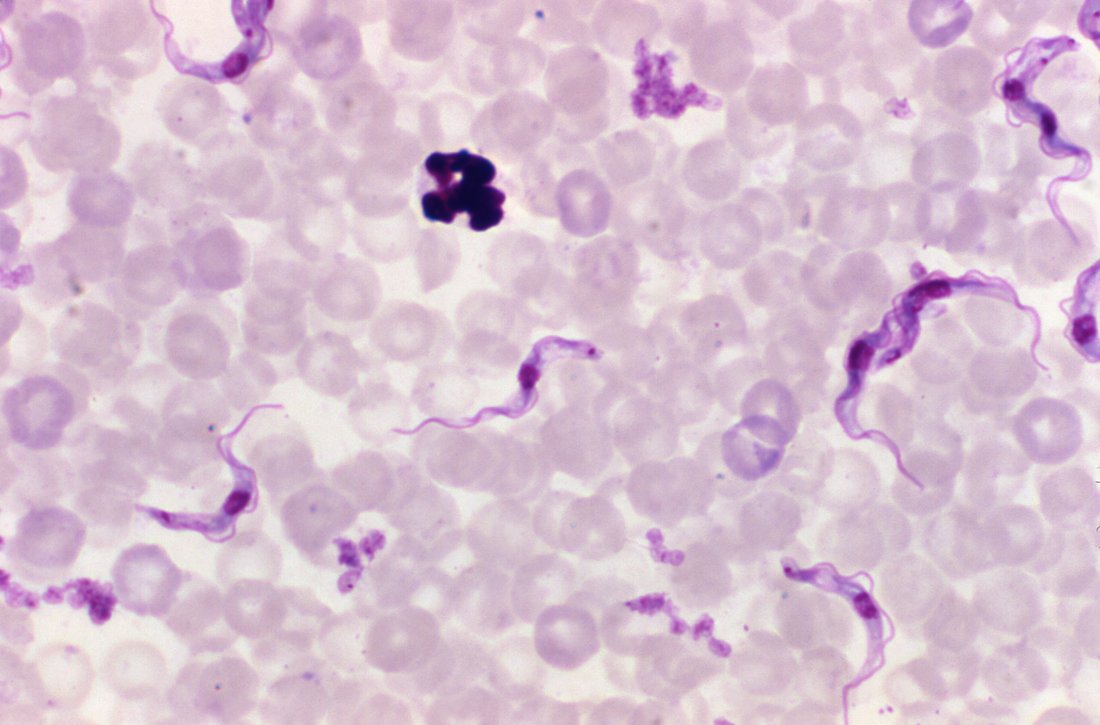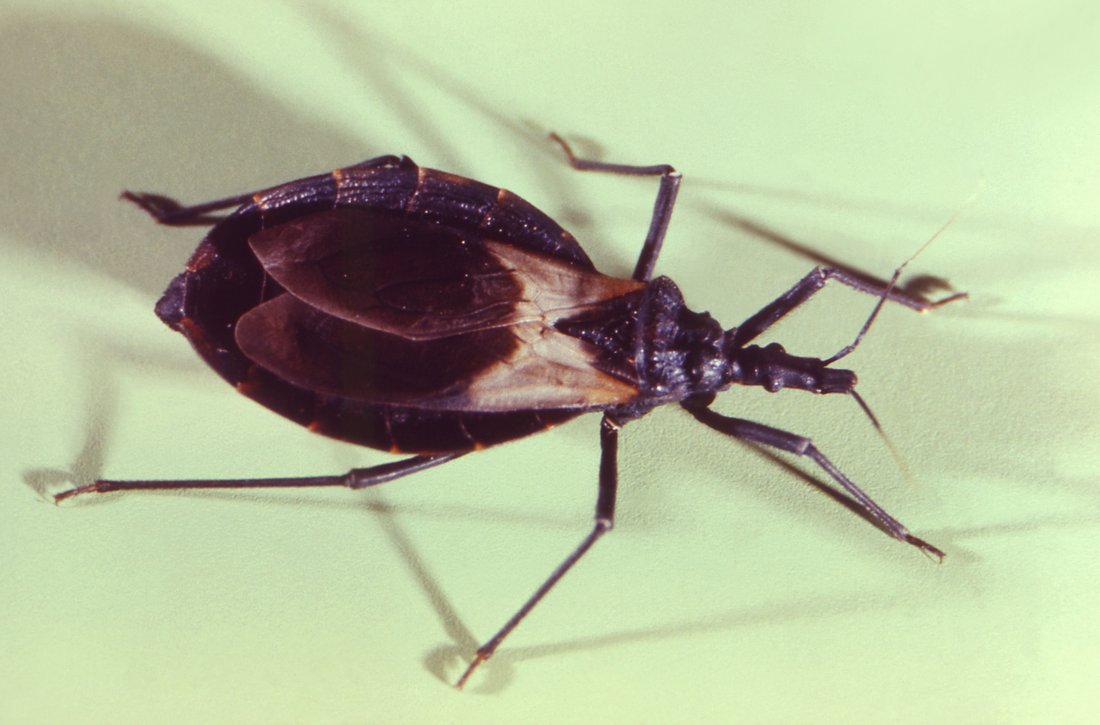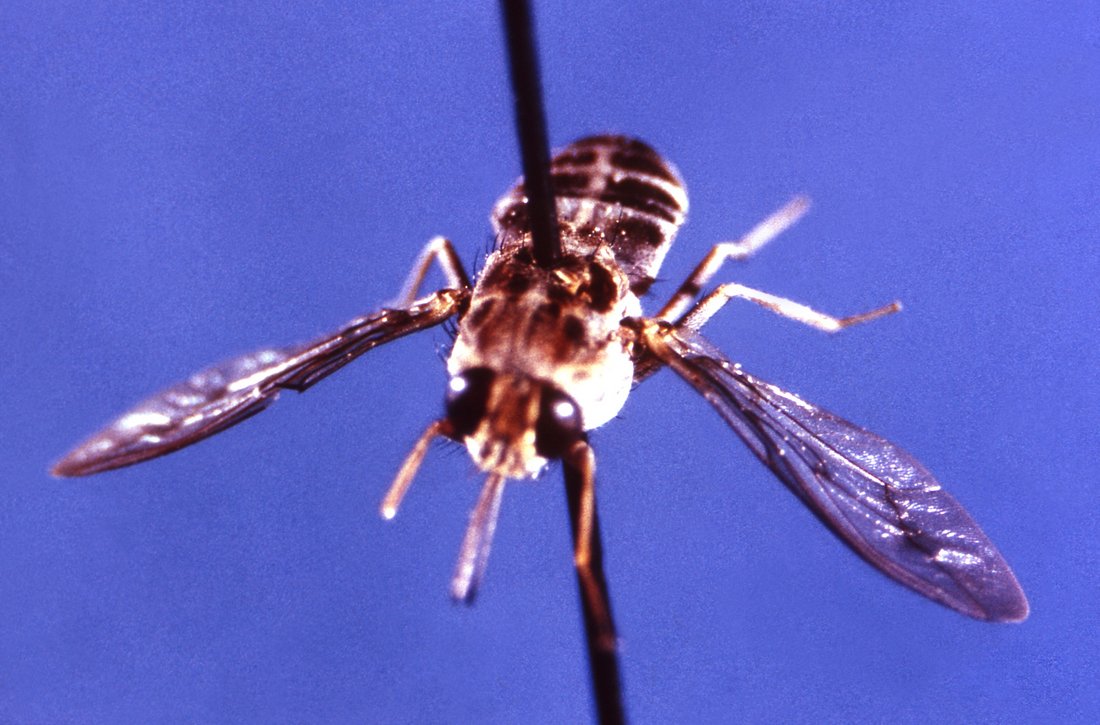
Drug discovery Hope in the Fight against Parasites
Every year, millions of people fall ill with Chagas or sleeping sickness. Both diseases are caused by parasites that are spreading from tropical countries to Europe. Researchers have discovered a weak spot in those parasites, which may be a key to a potentially life-saving drug.
What the Hungarian physician David Gruby discovered in 1834 continues to keep scientists busy today. Trypanosomes is the name that he gave to the small single-celled creatures he found in a blood smear under his microscope. The parasites, which travel by "drilling" (trypanon = Greek for drill), are usually transmitted by insects. Initially, they were described as pathogens for animal diseases. Today we know that humans may also become victims.
Rising threat in Europe
Kissing bugs and tsetse flies are the main intermediate hosts responsible for transmission into humans. Via a sting of the infected insects, the trypansome drills its way through the human skin. Particularly in tropical regions such as Latin America and Africa, trypanosome-caused diseases like Chagas or sleeping sickness are a serious threat to human health. Since trypansomes do not stop at national borders and temperatures are rising worldwide, they are now also spreading to North America and Europe. Currently, there is no cure for Chagas or sleeping sickness. Available drugs have severe side effects and resistances against them are already emerging.
Image Gallery



Parasitic diseases with severe effects
In Chagas disease, kissing bugs bite into the skin and transmit the parasite through the wound. After the initial infection, Chagas often breaks out following a long latency phase (years to decades). In the beginning, patients show flu-like symptoms, but the disease can lead to death through complications affecting the heart and gastrointestinal tract. In some cases, complications such as myocarditis occur many years later. The greatest challenge is to identify infected people without symptoms and to treat them at an early stage. People can also infect each other through contact with blood.
Sleeping sickness, or African trypanosomiasis, is transmitted via the saliva of the tsetse fly. It also breaks out several weeks after the bite infection. Typical symptoms range from skin rash to shivering. In the months that follow, the patients suffer from problems with concentration and coordination as well as sleeping problems, which ultimately end in a “sleep addiction”. People fall into a permanent state of doze, which gives the disease its name.
Hope from Munich
A research group led by Michael Sattler and Grzegorz Popowicz has been working for years with colleagues from other institutions on the development of a new drug to combat parasitic diseases. Their results are raising great hopes: The researchers found a novel way to eliminate the pathogen. Like all living organisms, trypanosomes have a metabolism that is essential for their survival. If this metabolism is disturbed, the parasite dies. Experts in biology, biochemistry, chemistry and medicine worked for years to make this idea a reality. The breakthrough came in 2017, when the researchers found a “key to the lock”.
Drug discovery using the lock-and-key principle
They knew that the PEX14 and PEX5 proteins are crucially involved in the parasites' metabolism and thus represent the ideal target. At the Bavarian NMR Center (which is jointly operated by Helmholtz Munich and the Technical University of Munich) they used nuclear magnetic resonance (NMR) spectroscopy to investigate the exact spatial structure of how the two proteins interact in order to measure the "lock" on PEX14. Based on the structure, they built the "key": a molecule that binds perfectly to PEX14 and thus blocks the interaction with PEX5 and thus eventually leads to death of the parasite.
Next step: clinical trial
Since then, the scientists have been working on pre-clinical development of the molecule to optimize its efficacy and safety. Their aim is to test it in clinical trials and eventually use it to develop a new drug. Furthermore, they are investigating whether other single-celled parasites also depend on similar proteins for their survival. If so, the new approach from Munich would also be suitable for combating other parasitic diseases such as leishmaniosis. The group has already received millions in funding from the German Federal Ministry of Education and Research (BMBF) and was awarded the Erwin Schrödinger Prize 2020.
Latest update: June 2022.






